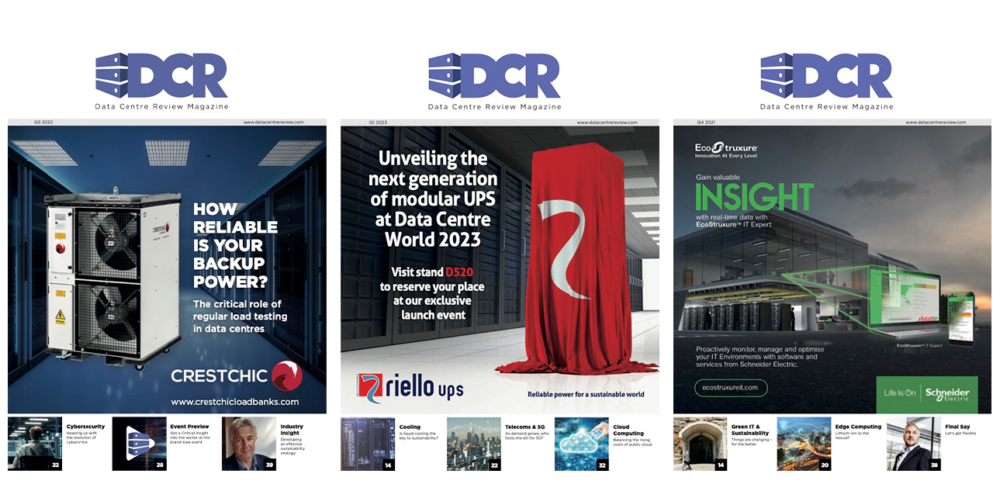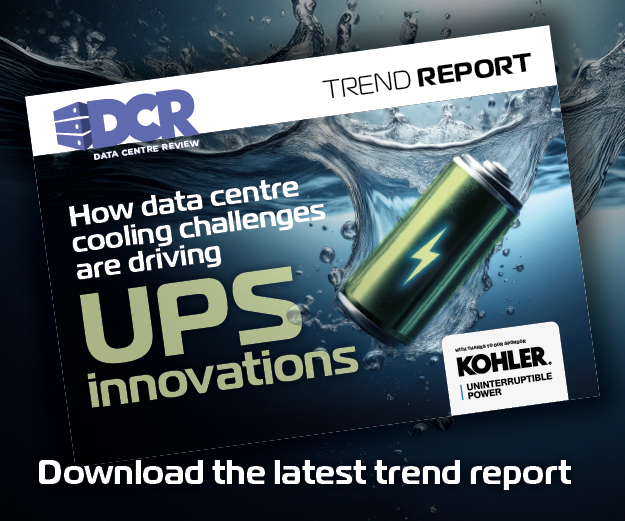The industry must carefully weigh local resources, alongside evolving metrics like PUE and WUE to make the right choice for cooling, according to Andrew Livesey, Associate Director at Cundall.
Data centres are the backbone of your digital world. Every online interaction – whether streaming, cloud computing, or digital transactions – relies on these facilities. Recognising their role, the UK Government has now classified data centres as mission-critical infrastructure. However, with great demand comes great responsibility. The facilities should be designed with sustainability in mind.
A particular challenge in data centre design is managing the heat produced by the servers. High-performance IT equipment, in particular, generates huge volumes of thermal loads. This necessitates efficient cooling solutions to maintain their operational efficiency. Typically, engineers choose from two main cooling methods: power-based or water-based.
Yet, the choice isn’t straightforward. Individual differences in the region, like water scarcity or energy grid emissions, can influence what will be the most efficient approach. As the data centre industry pushes for greater sustainability, operators are increasingly weighing the benefits and trade-offs that come from using water or power to cool their equipment.
Water’s role
For years, improving power usage efficiency (PUE) has been a top priority in data centre design. This has led many operators to favour water-based cooling solutions. These systems typically fall into two categories: direct air and indirect air cooling.
Direct-air cooling harnesses outdoor air drawn into the data hall and passed through an evaporative humidifier. As the water evaporates, it cools the air entering the system, which is circulated through the facility. This typically uses an air-side economiser to recirculate the warm air, creating a cyclical system that enhances the overall efficiency.
Indirect air cooling follows a similar principle. However, it uses a heat exchanger to transfer heat between internal and external airflows. Water enhances the exchanger’s performance, helping to reject heat while preventing external air from entering the data hall. In moderate climates like the UK, Ireland, and Germany, these systems eliminate the need for chiller compressors, which significantly lowers energy demand and maximises power available for IT loads.
However, water consumption in data centres has been a point of contention in recent years. End customers, governments, and regulators have become concerned about water use for cooling data centres – particularly in regions that face water shortages.
Designers can use chiller-based solutions in water-scarce areas, where electricity may be more readily available. Additionally, the growth in AI has heightened the adoption of liquid cooling, given the higher rack densities. Liquid cooling relies on hydronic systems that circulate coolant through server racks before ejecting heat via a series of chillers. While this approach meets the thermal demand of AI workloads, it has a knock-on effect on PUE as power consumption is increased.
Location determines the best cooling approach
The geographical location of a data centre often determines the most sustainable cooling solution. Climate conditions, resource availability, and existing infrastructure all influence whether water or electricity is the more viable option.
In water-scarce regions like California, prolonged droughts have made water-based cooling solutions impractical. Operators often move to air-cooled chillers and other electricity-driven cooling methods. They benefit from a relatively clean and stable power grid, making these options more feasible. Conversely, countries like Poland have easy access to vast volumes of water. But their power grid remains reliant on fossil fuels so using power-based systems increases the carbon footprint of the cooling solution. In situations like these, using the available water rather than power may be more sustainable.
Beyond these conventional options, innovative cooling options are emerging. Waste heat recovery captures and repurposes heat generated by data centres, redirecting it to district heating networks, offices, or industrial facilities. A successful implementation of this can be seen in Denmark, where a hyperscale data centre partnered with Fjernvarme Fyn to supply 165,000 MWh of heat per year to a district heating system.
Even the use of sea and river water cooling has been used as an option. It relies on using the naturally low temperatures of large bodies of water to dissipate heat. This reduces the reliance on compressors and takes advantage of the natural resources available. However, once again, this is a location-specific opportunity that must be considered during the site due diligence phase of design planning.
Rethinking how we measure sustainability
Sustainability is a fundamental consideration in modern data centre design. Regulations like the Paris Agreement and the UK Net Zero Carbon Buildings Standard outline pathways towards net zero carbon. But the way we measure sustainability in data centres needs to change as traditional metrics do not capture the full environmental impact.
PUE has been the industry standard for years. It measures the efficiency by finding the ratio between total energy consumption and the energy consumed by IT equipment. It has its uses, but when evaluating facilities that rely more on water-based cooling, water usage effectiveness (WUE) should be used.
Yet, WUE also can overlook the water embedded in power generation. If a data centre relies on an energy source that consumes large volumes of water during production, WUE may now indicate its full environmental impact.
To provide a more holistic view, some advocate for the effectiveness of carbon usage (CUE). This shifts the focus to carbon emissions. This enables operators to view the trade-offs between energy consumption and water use. This can provide a more comprehensive approach to identifying cooling strategies. Whatever the case, a singular focus on PUE or WUE may no longer be sufficient. We need to view these metrics holistically to get the best perspective.
Is it a one fit solution?
The truth is, there isn’t one exact way to build and cool a data centre. Like any building, the structure’s location, budget, and goal dictate how it should be designed. However, we have seen that companies are increasingly using reference designs to speed up the delivery of data centres when building in different regions. These templates are useful and can make design quicker as you are not starting from scratch, but they cannot be copied and pasted. Due to the nature of these facilities, companies still need a team of experienced designers to consider the site’s local nuances to determine whether water or power is the most efficient cooling solution.




